Mudi Dog

What Is the Mudi Dog Breed?
The Hungarian Mudi dog is a herding breed closely related to the Puli and Pumi dog breeds. Intelligent and agile, these biddable working dogs are uncommon outside of their native country of Hungary. It is estimated that there are only a few thousand are in existence worldwide.
Sometimes referred to as the Hungarian Mudi, the formal name for the breed is Canis Ovilis Fenyesi after the breeder that discovered them. The plural of Mudi is Mudik.
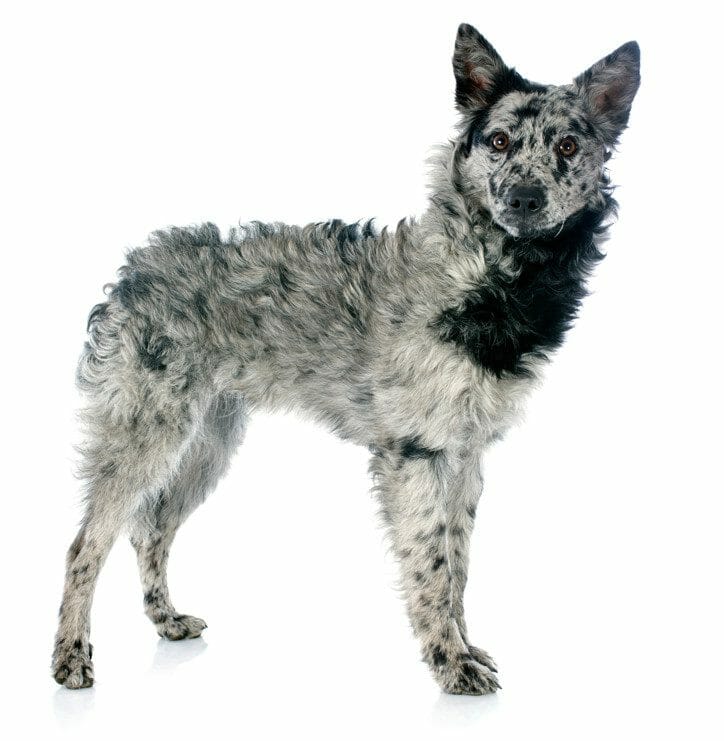
What Does a Mudi Dog Look Like?
The head of the Mudi is wedge-shaped with muscular jaws, oval eyes, and pointed noses. Ears should be erect. Often, a Mudi puppy will be born without a tail. These canines stand at 14 and 20 inches high with wideset hind legs.
Mudi Dog Colors
Common Mudi dog colors include:
- Black
- Brown
- Gray
- White
- Yellow
- Gray brown
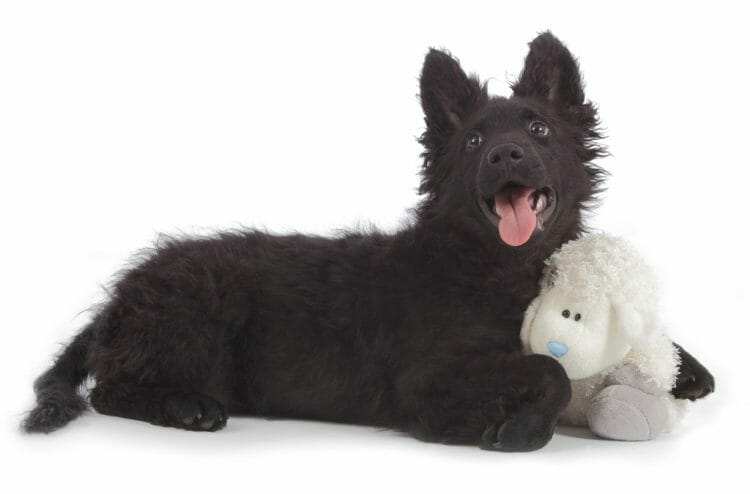
Mudi Dog Personality
Enthusiastic and eager to please their owners, the Mudi is highly intelligent and easy to train. With a natural guarding instinct, these dogs will always bark when something out of the ordinary is occurring. Often, a Mudi will tend to mistrust strangers. Early socialization can help teach these canines how to behave around others.
As working dogs, a Mudi requires plenty of mental and physical stimulation to ensure it does not get bored or destructive. Providing regular exercise can minimize this problem.
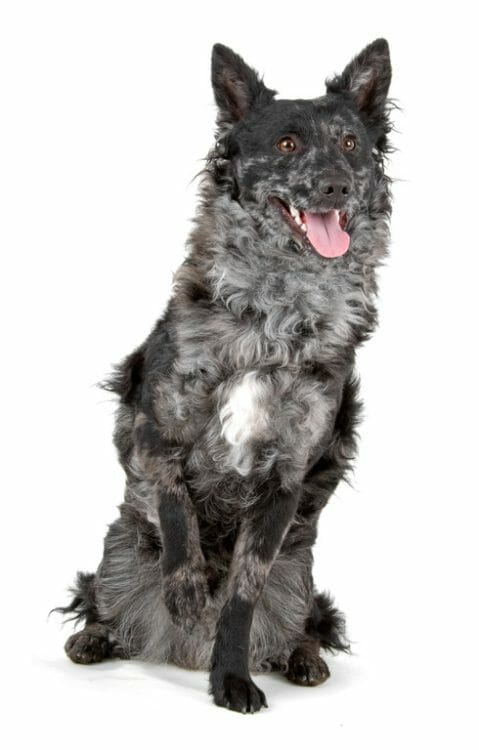
Mudi Dog History
Situated in the center of Europe, Hungary has always been a cultural melting pot where Huns, Teutons, Turks, and Slavs lived together. From around the fourth century, many dogs from other countries started to find their way to the Great Hungarian Plain, with most of these canines coming from Asia Minor.
Around 1,100 years ago, the nomadic Magyar tribes moved from Western Russia to Hungary. The herdsmen of the tribe kept sheepdogs. There were two types of sheepdogs used by the Magyar: large and small. The larger breeds would later become known as Komondor and Kuvasz. However, the smaller dogs were always interbred. This meant that the Pumi, Puli, and Mudi all shared very similar genetic histories. The smaller herding dogs like the Mudi would have been used to drive the flock, while the larger Komondors would serve as guards.
The Mudi dog first came into existence as a natural mix of Hungarian herding breeds like the Pumi or Puli with the German Spitz. Up until the 1930s, the Mudi was not formally recognized as a breed and was discovered by Museum director and breeder, Dr. Dezso Fenyes in 1936.
Not long after its discovery, numbers of Mudik sharply declined as many working dogs were killed during World War II. Fortunately, through conservation efforts, the breed was saved from the brink of extinction. Despite these efforts, the Mudi is still a rare breed. Many can still be found driving flocks of sheep in Hungary or working as mountain rescue dogs in Finland.
The Mudi was recognized by The Federation Cynologique Internationale in 1966 and by the United Kennel Club in 2006. The American Kennel Club has admitted the breed into its stock service. However, the Mudi has yet to receive recognition from the organization.
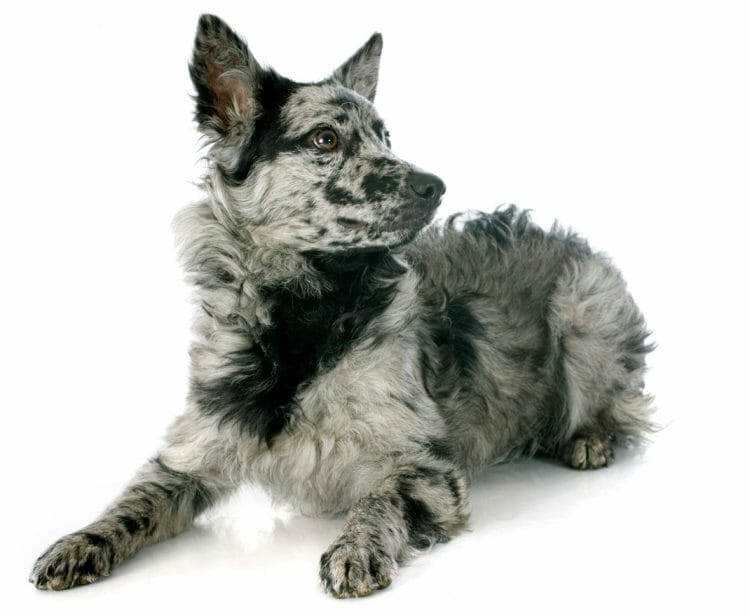
Mudi Dog Health
Generally, the Mudi is a healthy dog that is predisposed to very few genetic conditions. Owners should still be aware of some health issues that may affect the breed and should visit their veterinarian if any of the symptoms arise.
Hip Dysplasia
This is a condition that affects many breeds of dogs. The canine hip joint is made up of two parts, a ball, and a socket. As a Mudi dog puppy grows, these bones might develop at different rates.
Ill-fitting joints make it hard for the dog to walk, meaning they will limp or become lame. This condition can also cause arthritis.
A veterinarian will diagnose hip dysplasia using an X-ray. Treatment may consist of the use of non-steroidal anti-inflammatory drugs (NSAIDs), glucosamine, chondroitin sulfate, and omega-3 fatty acid supplements along with physical therapy. In many cases, surgeries such as a total hip replacement or a femoral head ostectomy (FHO) will be required.
Elbow Dysplasia
This condition is similar to hip dysplasia and occurs when the elbow joint develops abnormally. Dogs that suffer from elbow dysplasia may limp and seem unable to put weight on the joint which can cause forelimb lameness and osteoarthritis.
Diagnosis can be made by a veterinarian using X-rays or a CT scan. Treatment may involve anti-inflammatory painkillers, physiotherapy, regenerative therapies using stem cells and platelet-rich plasma, or surgeries such as an arthroscopic fragment removal or a subtotal coronoid ostectomy.
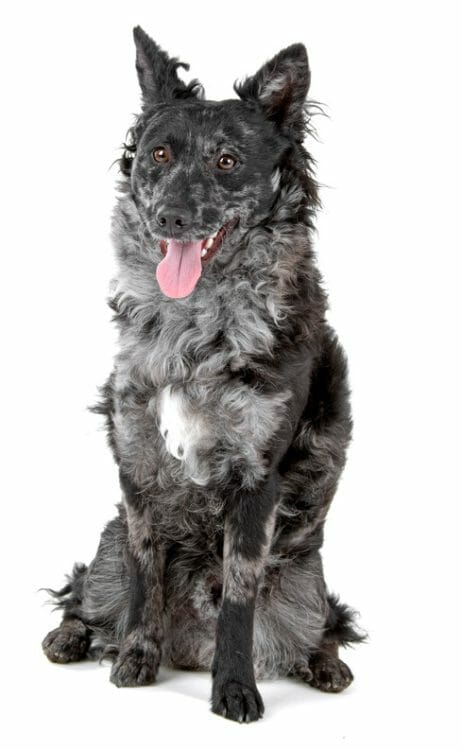
Luxating Patella
The patella refers to the dog’s kneecap. This is normally situated in the groove of the femur. If the patella is luxating, it means that it is out of place. Signs that a canine may be experiencing this condition are that they may be limping or that they will not be able to put weight on that leg.
If untreated, a luxated patella can lead to other injuries such as torn cruciate ligaments and may cause arthritis. To diagnose a luxating patella, the veterinarian will take an X-ray. Treatment usually involves corrective surgery.
Epilepsy
Epilepsy is a chronic neurological condition that causes a canine to have seizures. During these fits, abnormal electrical in the brain causes temporary changes in the movement and behavior of the dog.
The signs of epilepsy are a sudden loss of control, usually coupled with convulsions. Often, these fits will end as abruptly as they began and will only last for a few minutes. If a seizure lasts for more than five minutes, or the dog has more than two in a day, consult a veterinarian immediately.
It is not possible to cure epilepsy. However, using antiepileptic drugs can reduce the frequency and severity of fits.
Mudi Dog Lifespan
The typical lifespan for a Mudi ranges from 12 to 14 years. Environmental factors along with diet, exercise, and genetics all play a part in determining how long a dog will live. To ensure a dog is healthy, visit a veterinarian for regular checkups and ensure the recommended vaccination schedule is followed.



